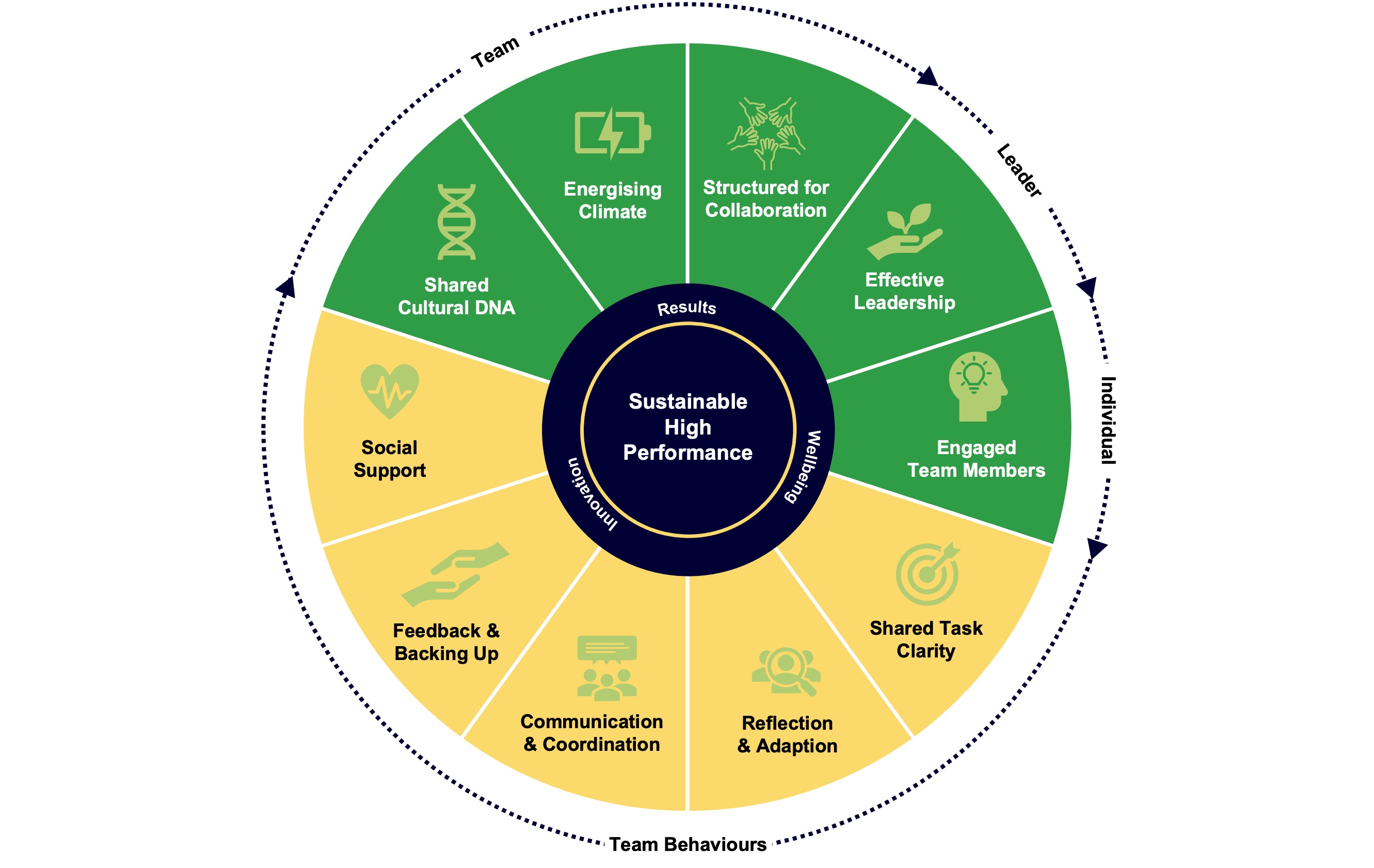Target Group
Program Delivery
Program Length
Primary Aims
Team Dynamics Model
The Team Dynamics model is used to organise the various factors which influence team performance.
Specifically, the influence and affect between:
- Team conditions (Shared Cultural DNA, Energising Climate, Structured for Collaboration, Effective Leadership and Engaged Team Members)
- Team behaviours (Shared Task Clarity, Reflection and Adaption, Communication and Coordination, Feedback and Backing Up, and Social Support) which subsequently affect
- Team outcomes (Results, Wellbeing and Innovation).
This process is dynamic, as team behaviours and the outcomes a team achieves influence subsequent team conditions, behaviours and outcomes. Teams cannot be viewed as static entities. The way the team behaves and the outcomes the team attains will change in response to a variety of individual, team, organisational and system factors. This model intends to support teams to monitor and continuously improve their teamwork.

Desired Outcomes
- Lift in the capability of team’s to self-manage activities that improve their team dynamics.
- Develop leadership capabilities of formal and informal leaders within the team.
- Supporting the enhanced functioning of teams, leading to increased levels of achievement of team results, wellbeing and innovation.